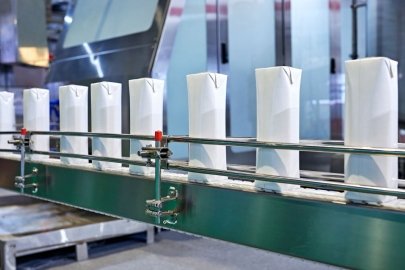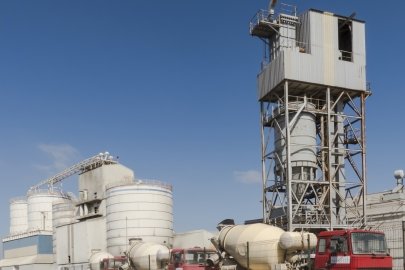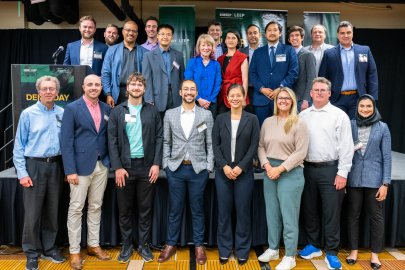U.S. national laboratories can receive up to $9 million through an upcoming competitive lab call to develop and lead a Cement and Concrete Center of Excellence to accelerate the development and adoption of novel low-carbon cement and concrete technologies
Industrial Efficiency & Decarbonization Office
July 19, 2024The U.S. Department of Energy (DOE) Industrial Efficiency and Decarbonization Office (IEDO) today announced its plan to create a Cement and Concrete Center of Excellence to accelerate the development and adoption of novel low-carbon cement and concrete technologies. U.S. national laboratories can receive up to $9 million through an upcoming competitive lab call to develop and lead the center. The center will support collaboration across academia, national labs, government agencies, and corporations to develop and validate low-carbon cement and concrete technologies, increase the industry’s economic competitiveness, and help the U.S. reach net-zero carbon emissions by 2050.
The center is part of DOE’s strategy to leverage the convening power of the National Labs to support industrial decarbonization technologies from idea inception to adoption on U.S. factory floors. Through offices like IEDO, the Office of Technology Transitions, and the Office of Clean Energy Demonstrations, DOE is investing in generating technology innovation and accelerating the commercialization, market demonstration, and demand-side adoption of those technologies. The Cement and Concrete Center of Excellence will support investments like these by bringing together the research community with market analysis experts and customers to validate technologies and ensure successful, data-driven market integration. Together, the offices anticipate announcing additional opportunities for the national labs and its partners to support DOE’s inception-to-adoption efforts, beginning with initiatives to commercialize mature, low-carbon technologies.
Concrete is the most used human-made material on earth and is vital for housing, infrastructure, and wide range of critical construction projects. Concrete—and the cement used to make it—is critical to the U.S. economy, and its demand is expected to double by 2050. But as demand for concrete increases, so will its carbon footprint. The cement and concrete industry is responsible for 2% of energy-related CO2 emissions in the United States. The industry's value chain coupled with its use of high heat and the emissions intrinsic to its production process make it challenging to decarbonize.
Concrete production is incredibly complex—with an emissions profile that starts at the quarry and doesn’t end until the concrete is poured. Developing low-carbon cement and concrete materials along with the codes and standards for safe adoption will require feedback, evaluation, and dialogue across the full ecosystem of experts involved at each step of the production process. The center will be uniquely positioned to bring together researchers, engineers, code and standards developers, and other key stakeholders across the full value chain to model and evaluate new technologies and move them from the lab toward market-ready adoption.
The center will also de-risk new decarbonization technologies for first movers by developing tools to predict material performance in different service environments. The center will expand the use of these new solutions, facilitate data acquisition in a live environment, and promote practical applications that reduce cost and increase sustainability.
IEDO seeks to stand up a center that will address the following priorities:
- Test method development. New and/or improved tools and techniques, tailored for new binder chemistries to be used in concrete applications. The new and/or improved tools and techniques should address phase formation and carbon uptake evaluation. A correlation between chemistries and durability is expected.
- Modeling. Methods to predict performances using data-driven tools. Modeling should consider predictions about ideal binder formulations to achieve performance (fresh or in service). Attention to durability under a range of environmental conditions should be considered as well.
- Data collection and monitoring. Nondestructive characterization tools and techniques for in situ/field monitoring of concrete applications. The objective is to allow data acquisition from a concrete element that could be in service. The use of next-generation sensors and instrumentation, including non-destructive techniques, is encouraged.
- Carbon accounting. Methodologies for calculating and reporting emissions in selected applications and compare them to a designated baseline. The data obtained via in-house testing or provided by industrial partners will be analyzed and used for lifecycle analysis and support to Environmental Product Declarations.
DOE national laboratories and DOE plants and sites are eligible to receive for funding from this upcoming lab call. National laboratories are encouraged to leverage existing infrastructure and collaborate with universities and other entities. Proposals should allocate sufficient resources to address commercialization challenges and barriers.
More IEDO News
-
 Projects will drive industrial energy use and emissions down while increasing America’s manufacturing competitiveness in global markets
Projects will drive industrial energy use and emissions down while increasing America’s manufacturing competitiveness in global markets -
 Projects will drive industrial emissions down while increasing America’s manufacturing competitiveness in global markets.
Projects will drive industrial emissions down while increasing America’s manufacturing competitiveness in global markets. -
 The Industrial Sustainability, Energy Efficiency, and Decarbonization (ISEED) Collaborative will provide assistance to partners across the manufacturing sector to develop and disseminate instructional curricula and training programs.
The Industrial Sustainability, Energy Efficiency, and Decarbonization (ISEED) Collaborative will provide assistance to partners across the manufacturing sector to develop and disseminate instructional curricula and training programs. -
 On Sept. 3, 2024, the U.S. Department of Energy announced awards totaling $142 million for small businesses in 34 states. This investment includes $3.4 million for three projects funded by the Industrial Efficiency and Decarbonization Office.
On Sept. 3, 2024, the U.S. Department of Energy announced awards totaling $142 million for small businesses in 34 states. This investment includes $3.4 million for three projects funded by the Industrial Efficiency and Decarbonization Office. -
DOE announced approximately $15M to address adoption challenges preventing later stage commercialization, demonstration, and deployment of industrial decarbonization technologies
-
 U.S. national laboratories can receive up to $9 million through an upcoming competitive lab call to develop and lead a Cement and Concrete Center of Excellence to accelerate the development and adoption of novel low-carbon cement and concrete technologies
U.S. national laboratories can receive up to $9 million through an upcoming competitive lab call to develop and lead a Cement and Concrete Center of Excellence to accelerate the development and adoption of novel low-carbon cement and concrete technologies -
 In the latest round of cohorts in its Lab-Embedded Entrepreneurship Program (LEEP), 33 innovators will be embedded across four U.S. national laboratories to work with an extensive network of mentors and experts.
In the latest round of cohorts in its Lab-Embedded Entrepreneurship Program (LEEP), 33 innovators will be embedded across four U.S. national laboratories to work with an extensive network of mentors and experts. -
 The Framing the Future: Industrial Technologies Photo Contest will award $27,000 for the best photos of the innovative technologies, processes, and people that will help the United States achieve a decarbonized industrial sector.
The Framing the Future: Industrial Technologies Photo Contest will award $27,000 for the best photos of the innovative technologies, processes, and people that will help the United States achieve a decarbonized industrial sector. -
 This request for information seeks to gain strategic and technical feedback on decarbonizing America’s industrial sector and positioning the United States as a leader in the global clean energy economy
This request for information seeks to gain strategic and technical feedback on decarbonizing America’s industrial sector and positioning the United States as a leader in the global clean energy economy -
 DOE today announced its intent to issue multiple funding opportunity announcements totaling over $100 million for field demonstrations and other research to support better planning and operation of the electric grid.
DOE today announced its intent to issue multiple funding opportunity announcements totaling over $100 million for field demonstrations and other research to support better planning and operation of the electric grid.
Sign up to The Production Line, IEDO's monthly newsletter, to stay updated on news like this.

